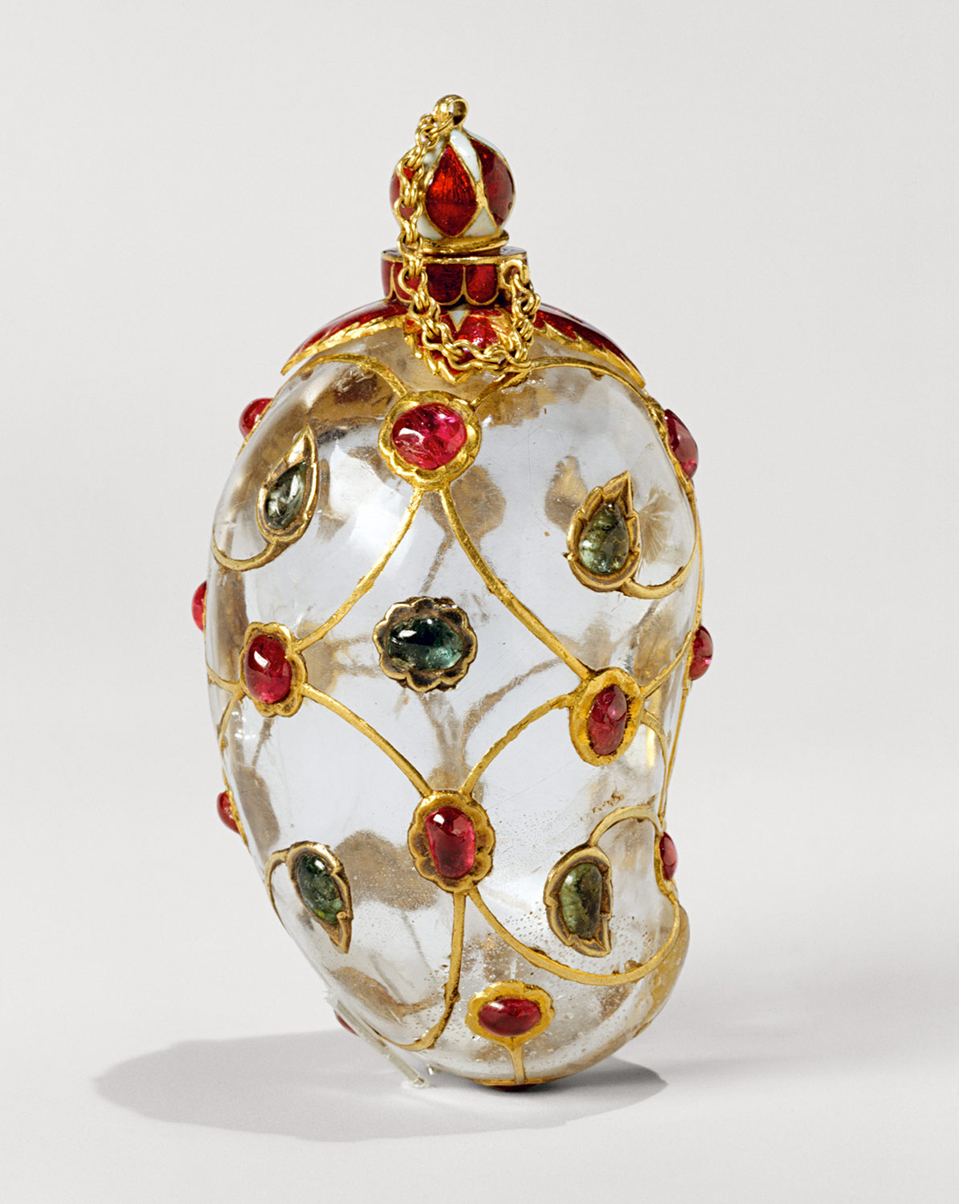Mango-Shaped Flask, Rock crystal; set with gold, enamel, rubies, and emeralds, India, Mid-17th century.

In spite of its modest size, this flask in the shape of a mango, adorned with gold, gems, and enameling, eloquently demonstrates the artistic standards and tastes of seventeenth-century Mughal India. Likely to have been created during the reign of Shah Jahan, the emperor who built the famous Taj Mahal, the flask expresses the Mughal love of natural forms and precious materials. The finely balanced, elegantly drawn, and relatively spacious network of scrolling vines in gold, inset with gemstones, recalls the Mughal debt to Safavid Iran, where similar networks of scrolling vines with palmettes, blossoms, and leaves were in vogue in the sixteenth century.
